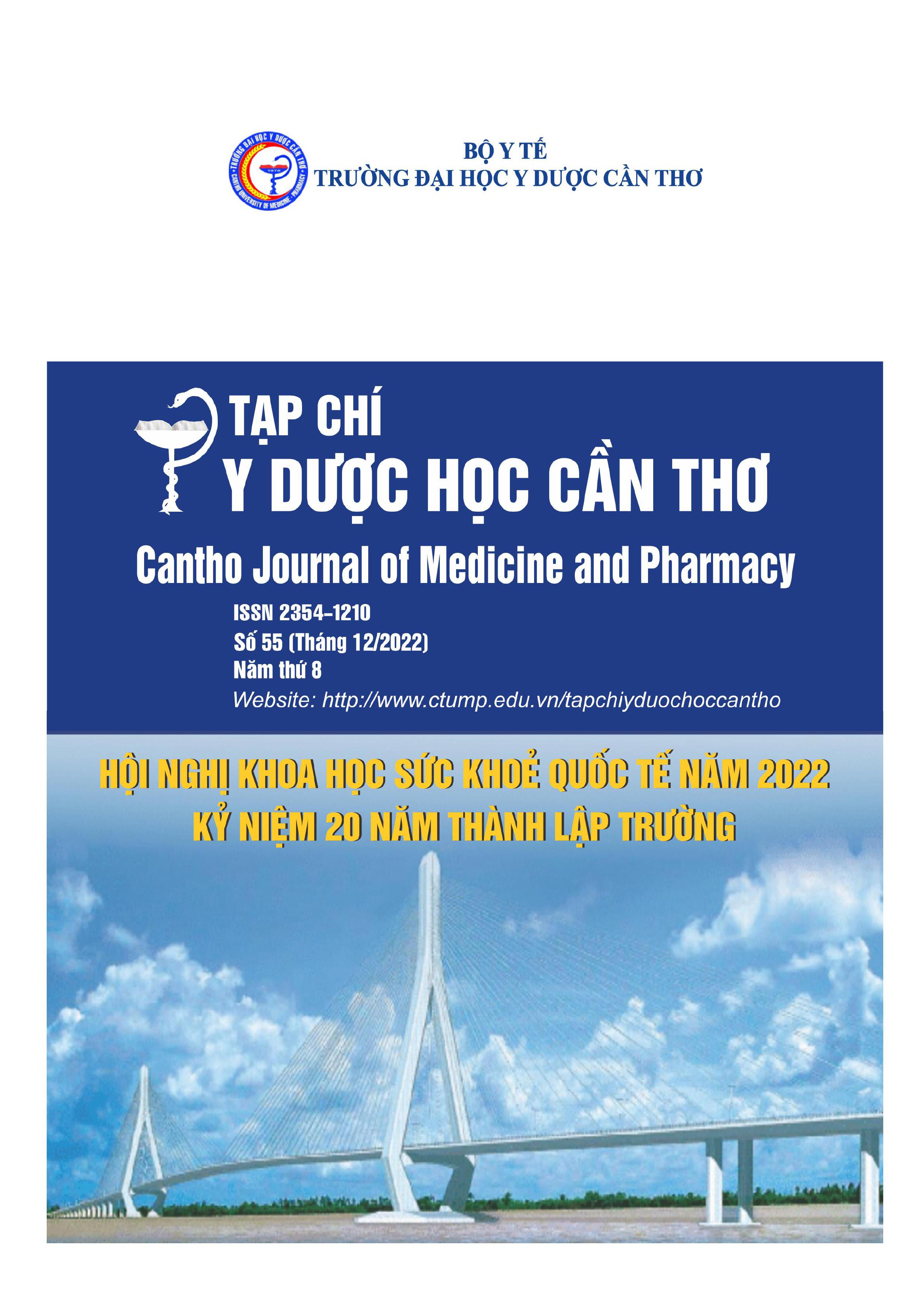GOTHIC ARCH TRACING CENTRIC RELATION RECORDING TECHNIQUE IN THE CONSTRUCTION OF CONVENTIONAL COMPLETE DENTURES ON EDENTULOUS PATIENTS AT CAN THO UNIVERSITY OF MEDICINE AND PHARMACY HOSPITAL IN 2021-2022
Main Article Content
Abstract
Background: There are many techniques for guiding the patient’s mandible into centric relation, we used Gothic arch tracing to establish centric relation during the construction of complete dentures. Objective: To examine clinical characteristics and to evaluate the treatment results of Gothic arch tracing centric relation recording technique in the construction of conventional complete dentures. Materials and method: Descriptive cross-sectional study was performed on 30 edentulous patients. Results: The study included 18 males and 27 females with an average age of 62.57±7.2. According to the Sangiuolo classification, most of the upper jaws had a class I residual bridge resorption level (53.3%), and more than half of the lower jaws had a class II resorption level in the upper jaw (64.4%). The mean time recording centric relation was 9.6±3.2 minutes. The mean time is taken for technique according to the level of bone resorption of the upper and lower jaw: grade I 9.25±3.44 minutes and 9.11±3.26 minutes, grade II 11.11±3.38 minutes and 9.97±3.67 minutes, grade III 16±1.41 minutes and 13.43±2.51 minutes. Follow-up after 3 months of treatment, the dentures are stable in chewing activities: upper jaws 100%, lower jaws 93.3%. Conclusion: The Gothic arch tracing centric relation technique provides accurate centric relation recording, enhancing the stability of conventional complete dentures.
Article Details
Keywords
Centric relation recording, Gothic arch, conventional complete denture
References
2. Nguyễn Phú Hòa (2014), Nghiên cứu làm hàm giả tháo lắp toàn bộ có sử dụng kỹ thuật lấy dấu sơ khởi đệm và lấy dấu vành khít, Luận án Tiến sĩ, Trường Đại học Y Dược Thành phố Hồ Chí Minh, Thành phố Hồ Chí Minh.
3. Đồng Thị Mai Hương (2019), Nghiên cứu tình trạng mất răng và nhu cầu điều trị phục hình ở người cao tuổi tại khoa Răng Hàm Mặt Bệnh viện Trường Đại học Y Hải Phòng, Tạp chí y học Việt Nam, 503, tr.128-133.
4. Trần Thiên Lộc, Lê Hồ Phương Trang (2011), Thực hành phục hình răng tháo lắp toàn hàm, Nhà xuất bản y học, thành phố Hồ Chí Minh, tr.32-33.
5. Banerjee R., Chahande J., Banerjee S., Radke U. (2018), Evaluation of relationship between nutritional status and oral health related quality of life in complete denture wearers. Indian J Dent Res, 29(5), tr.562-567.
6. Bergman B.,Carlsson G.E. (1985), Clinical long-term study of complete denture wearers. J Prosthet Dent, 53(1), tr.56-61.
7. Boulos P.J. (2007), Simplified method for recording maxillomandibular relations in complete dentures. N Y State Dent J, 73(3), 24-7.
8. Critchlow S.B., Ellis J.S.,Field J.C. (2012), Reducing the risk of failure in complete denture patients. Dent Update, 39(6), 427-30, 433-4, 436.
9. Meghana Gajavalli S. U. (2019), An insight into gothic arch tracing, TPDI, 10(1,2), pp.6-10.
10. Nitecka-Buchta A., et al. (2018), Functional Assessment of the Stomatognathic System, after the Treatment of Edentulous Patients, with Different Methods of Establishing the Centric Relation. Pain Res Manag, 117-120.
11. Papadaki E.,Anastassiadou V. (2012), Elderly complete denture wearers: a social approach to tooth loss. Gerodontology, 29(2), e721-7.
12. Sushma R., et al. (2019), A clinical comparative study to assess the efficacy of a new centric registration technique with a conventional technique. J Indian Prosthodont Soc, 19(4), 290-295.


